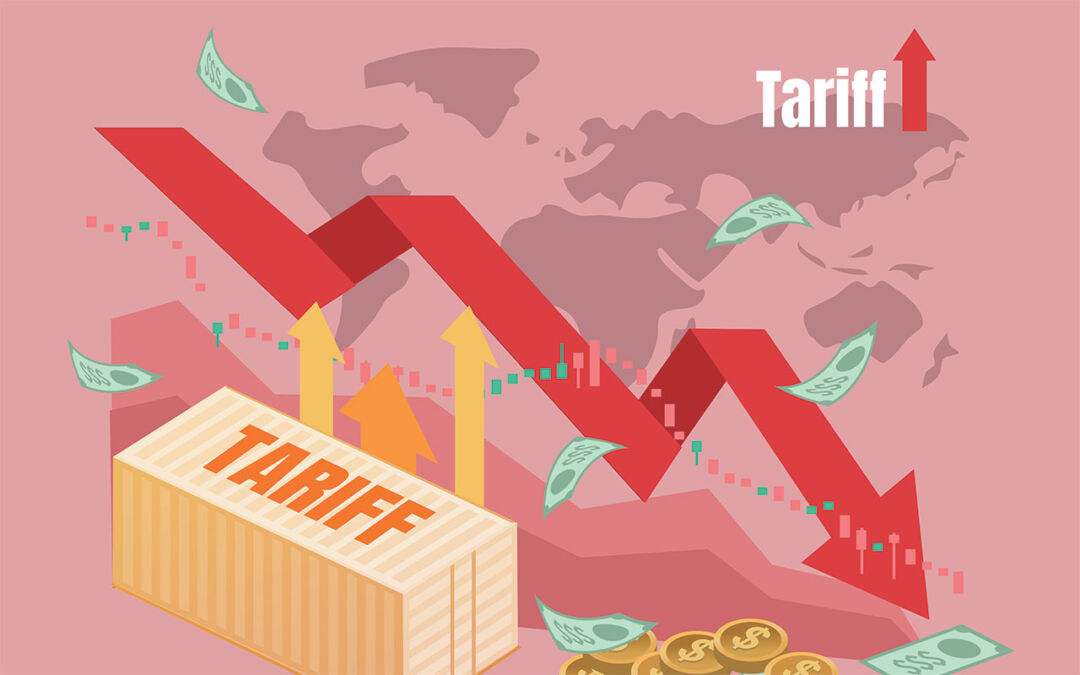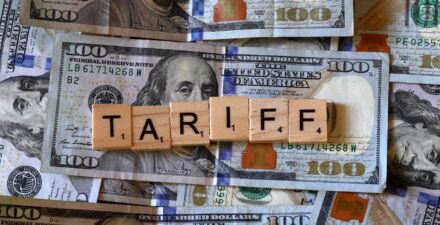Uncertainty created by ever-changing tariff policies harms U.S. economic growth

The approaches to international trade taken by the first and now second Trump administrations have been an endless jumble of tariff negotiations and ever-changing policies. Since 2018, duties have been imposed, revised, suspended, and reinstated, leaving U.S. businesses unsure of whether to plan for protectionism or relief. Though change has been a true constant of the Trump tariffs thus far, another larger pattern also has emerged of the U.S. economy caught in perpetual uncertainty about the rules that govern it, creating a drag on economic growth.
Tariff rates offer one of the most easily quantifiable signs of this limbo. In the U.S. trade dispute with China, for example, the average U.S. tariff on Chinese goods rose from about 3 percent in early 2018 to as high as 127 percent in May 2025, before being reduced to roughly 47 percent by as of the end of October.
Even within North America, firms are left guessing which rules will hold and which will change next. For Canada and Mexico—the two geographically closest trading partners of the United States—the story is only slightly less erratic than for China. Under the United States-Mexico-Canada Agreement—the trade agreement negotiated by President Donald Trump in his first term to replace the North American Free Trade Agreement—qualifying goods still move across the three countries’ borders duty-free, but noncompliant imports (such as goods that contain a large share of non-North American materials) now face tariffs as high as 35 percent for Canada and 25 percent for Mexico.
These taxes on imports (and the retaliatory tariffs that U.S. exports now face in many markets around the world) carry real economic costs. The Organisation for Economic Co-operation and Development expects U.S. economic growth to slow to 1.8 percent this year and 1.5 percent next year, down from 2.8 percent in 2024.
Though these tariffs’ effects on the prices of consumer goods have been modest so far, as carveouts cut effective tariff rates and firms drew down inventories built in anticipation of the tariff hikes, my research on the pass-through of these costs, along with work by others, shows that further pain is probably coming. While firms may be slow to pass cost shocks through into prices, we find that when they do, they raise prices in sizable increments. That means that whichever tariffs survive the impending U.S. Supreme Court ruling on the legality of the administration’s tariffs, they will eventually lead to rising prices—and will spark higher inflation. These higher prices likely will not only curtail U.S. imports but also reduce the buying power of consumers overall, further slowing U.S. economic growth.
Tariffs, however, are only the visible tip of the iceberg. Beneath them is a wider pattern of policy unpredictability: unprecedented government interventions, shifting regulatory signals, and an increasingly blurred line between business decision-making and political favors. Consider that the federal government has taken a 10 percent equity stake in Intel Corp., a major U.S. technology firm, in a move that signals to companies they may now count on (or fear) more direct government involvement. Adding to that is the pressure on companies to channel “contributions” or support to particular political projects, including reports of corporate donations tied to a new presidential ballroom where the East Wing of the White House used to be.
What do global firms such as Apple Inc., Boeing Co., or Ford Motor Co. really expect when they engage in these interactions? How many board decisions or capacity expansions are stalled while firms await signals about which favors will matter or which policies will be enforced? And where does this leave the young, innovative firms that fuel economic growth but lack the resources or political access to secure a seat at these tables? The result is less a freeze than a slow-motion paralysis: The increasing cost and risk of committing to large, irreversible investments—building new factories, making additional hires, and spending on research and development, to name a few—means that many firms adopt a “wait-and-see” posture, leaving the U.S. economy in limbo.
That uncertainty spreads beyond the plant floor. It shows up in exporters holding back entry into foreign markets that may close abruptly. It shows up in firms choosing to relocate or outsource rather than invest domestically, simply because the rules may change. And it shows up on farms, where producers must decide whether to plant next year’s crops expecting new bailouts or renewed access to foreign buyers. Uncertainty does not appear in the Gross Domestic Product tables the way tariffs do, but its drag on investment may prove more consequential.
A survey of business executives conducted by the Federal Reserve Bank of Atlanta this year, for example, finds that 40 percent of executives plan to reduce hiring and 45 percent expect to scale back capital investment over the next 6 months due to policy uncertainty. The cost of this uncertainty is economic potential left on the table: job offers never made, plant expansions that never break ground, and business owners spending precious time reading political tea leaves instead of innovating new products and improving operations.
Even if a future presidential administration unwinds the current tariff regime, the shadow of this era will persist as an enduring sense that markets move at the mercy of politics. The expectation that government can intervene, favor certain firms, or reverse course overnight may outlast the tariffs themselves. Just ask the Trump administration’s favored industries—from semiconductors to steel, or the farmers who relied on bailout checks when export markets closed—how easily political proximity translated into protection. That impulse will not be confined to one political party: The same tools of industrial favoritism could tempt a left-of-center administration to steer direct grants or regulatory policy toward its own priorities in ways that feel more like picking winners than correcting externalities.
That expectation may prove to be the costliest legacy of all—a long shadow of uncertainty that may continue to shape how U.S. businesses invest, hire, and grow for decades to come. Such uncertainty not only harms the industries the tariffs purportedly protect, but also creates a drag on longer-term U.S. economic growth. In the end, the consequences of the Trump administration’s tariffs are not simply elevated tax rates but also pervasive economic uncertainty and political favoritism—a combination that may shape the U.S. economy long after the tariffs themselves are gone.
Did you find this content informative and engaging?
Get updates and stay in tune with U.S. economic inequality and growth!





Stay updated on our latest research